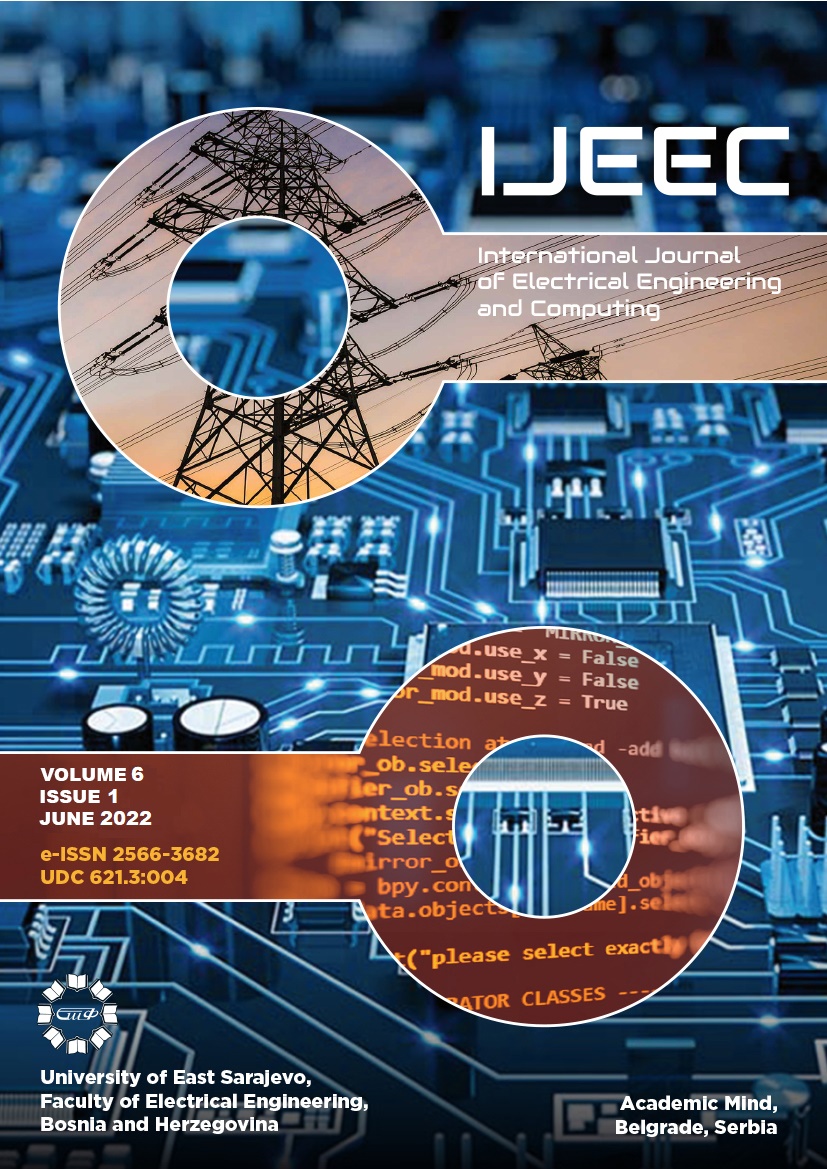Workspace and kinematic structure analysis of a 6-DOF Lambda parallel kinematic machine
DOI:
https://doi.org/10.7251/IJEEC2206001NAbstract
This paper presents workspace and kinematic analysis of a parallel kinematic machine based on the Lambda mechanism.
The considered parallel kinematic machine has six degrees of freedom (DOF), achievable with six actuated translation joints. The
kinematic analysis includes the definition of every active part of the machine, as well as the definition of every active or passive joint
used to connect machine parts. The mathematical model of the machine is created for the better understanding of the machine's
operation. The proposed mathematical model of the machine includes inverse kinematic equations, whose solving presents the first
step in workspace analysis. In this case, the offered parallel kinematic machine has six active-joint variables, and every active-joint
variable is the result of one inverse kinematic equation. Verification of the inverse kinematic equations has been done analytically,
using MatLab software and a CAD/CAM system. Workspace analysis, as one of the most important parameters of the parallel
kinematic machine, presents the main topic of this paper. In this case two approaches to the workspace analysis are given. The first
considered analysis is used to determine the achievable workspace of the machine, and the second analysis is used to determine the
total orientation workspace of the machine. Polar coordinates are used to simplify the process of the workspace analysis.

